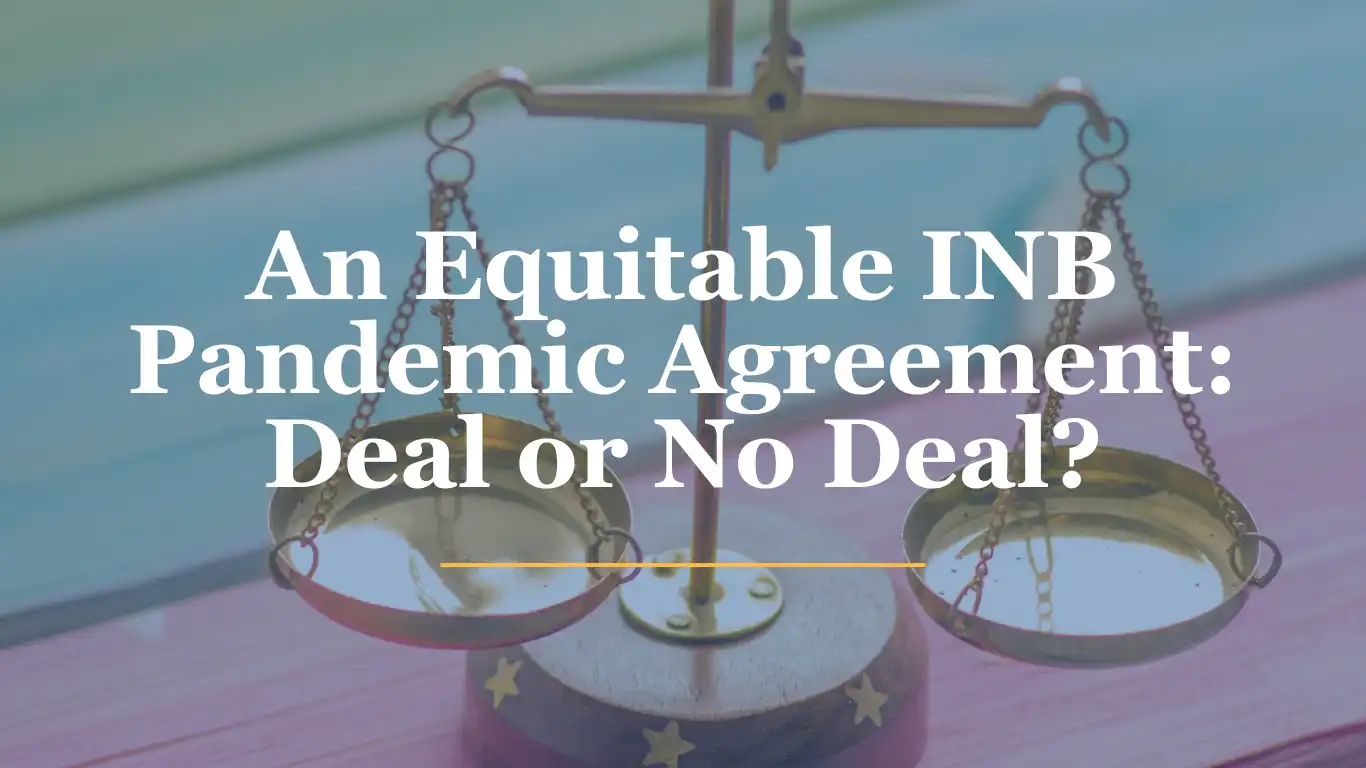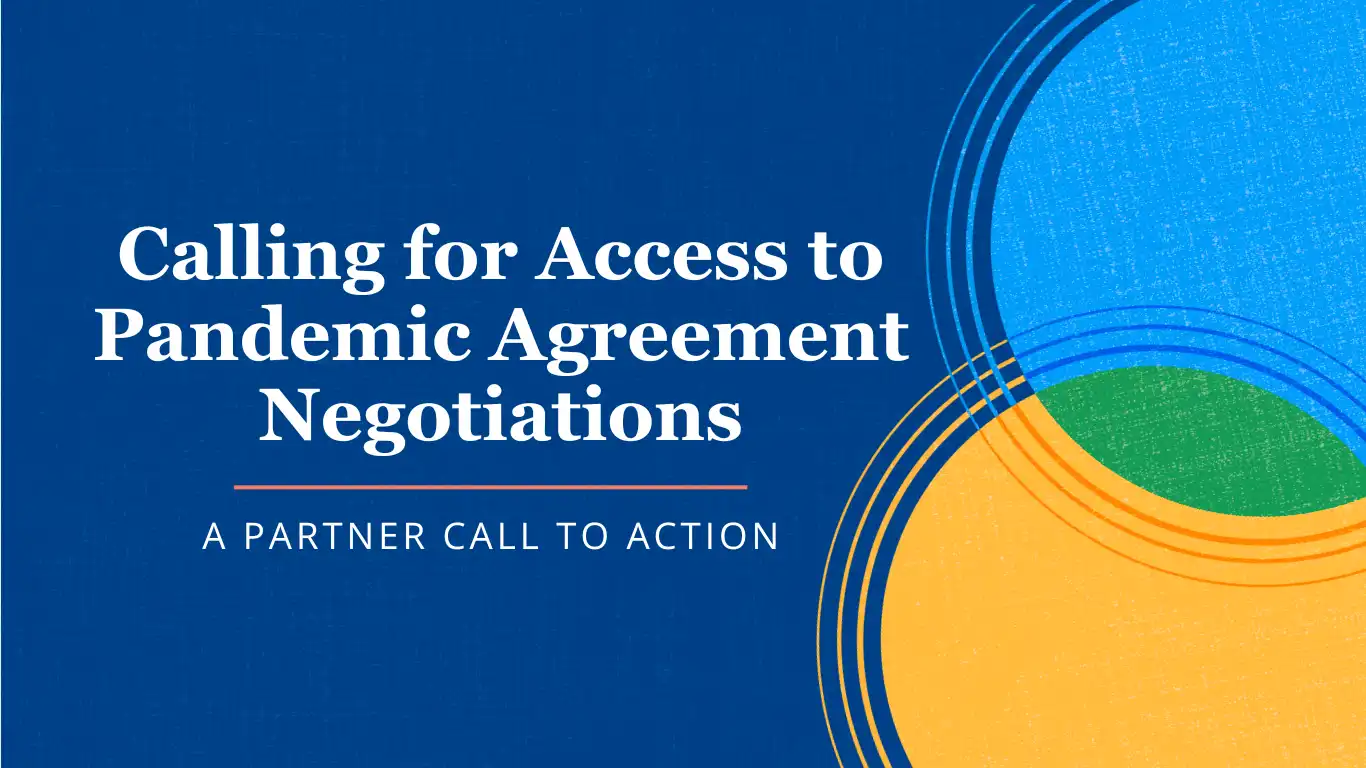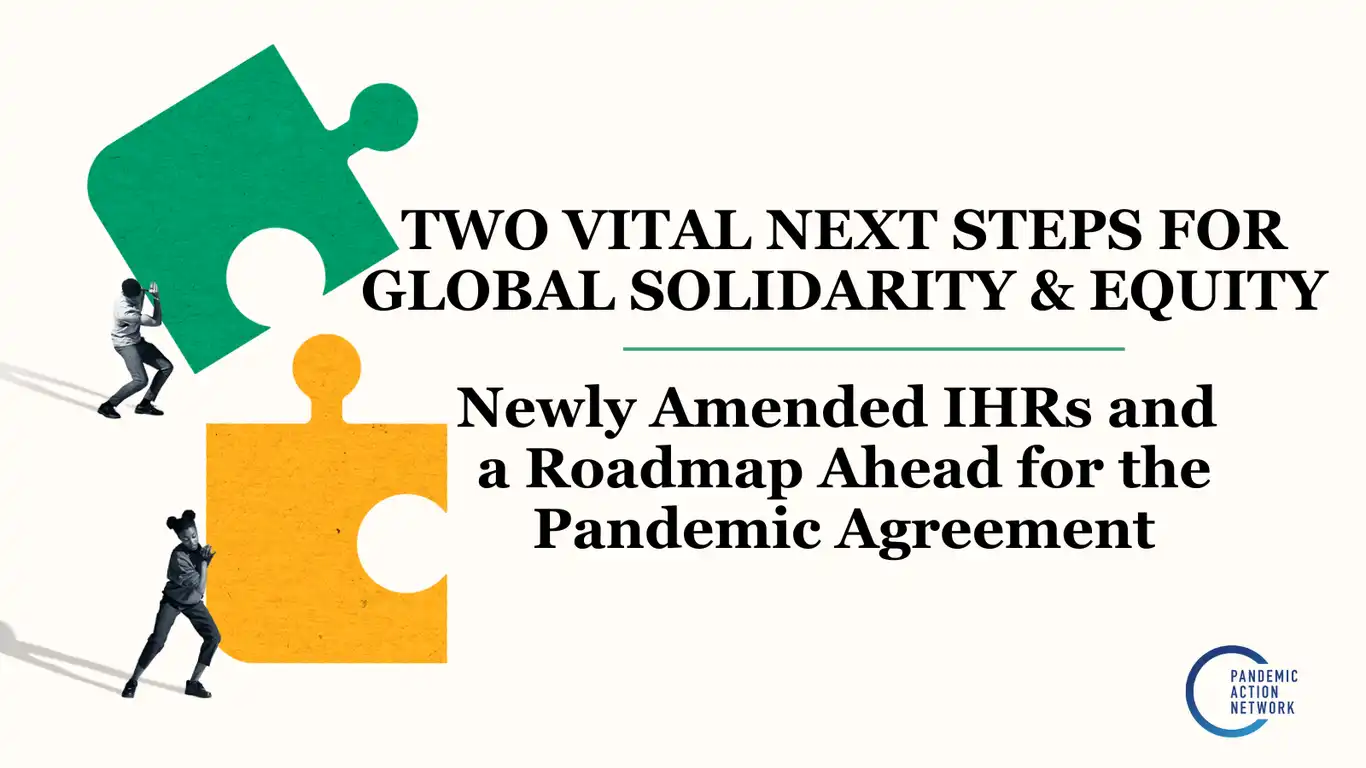Are we alive to the reality we continue to face?
With the memory of the COVID-19 pandemic slowly fading away, there is palpable fear that the once-in-a-lifetime opportunity to negotiate a global pandemic agreement may come a cropper. With the penultimate negotiating text for ninth meeting of the Intergovernmental Negotiation Body’s (INB) freshly off the press, many pundits have descended on it with a fine-toothed comb, scouring through its content to pick out if the promises of equity and cooperation have a chance. The preliminary view is still that the equity provisions are few and far between and weakly grounded in non-binding, unenforceable language. Human rights framing is lacking, and pertinent inclusive language has been eroded. That is not to say that there have not been some improvements. In fact, the reintroduction of a Conference of Parties (COP) governance structure in Article 21 has been greatly appreciated, even though the cadence of the review session being spread out at five years, rather than an annual process, is still a concern.
Indeed, the INB process is an existential endeavour for many in regions that faced disproportionate barriers to accessing COVID-19 tools in the face of a possible apocalypse. For many in low-and middle-income countries (LMICs), securing a transformative pandemic agreement with implementable and binding provisions that would ensure we do not repeat what was witnessed during COVID-19 is what makes the difference. Yet for a sizable number of high-income countries (HICs) with influential industry players, it is not as much of a delicate balancing act. Instead, industry-driven, self-serving interests prominently overshadow the desire to heed the call to act in the collective interest of humanity.
This has been the unfortunate scenario which has seen the negotiations morph into binary camps of HICs and LMICs; you would be forgiven for thinking this is not the same humanity that faced the collective threat of devastation just four short years ago.
Was it a daydream?
As we approach crunch time in this negotiating process, it is clear that positions taken at the start of the negotiation are yet to change significantly. Is this a real negotiation, or simply a power play, a waiting game to see who will blink first?
The commissioning of the INB in December 2021 was greeted with a sense of optimism. Fresh experience from the COVID pandemic showed us that the current market-driven, charity-based models — where a small number of countries (mostly HICs) fund, research, design, and manufacture pandemic countermeasures that are then distributed to the rest of the world (mostly LMICs) — failed for the vast majority of humanity. It is a model that is not fit for purpose and cannot be relied upon to prevent and manage pandemics.
The overwhelming ambition was that the INB process would secure true equity in pandemic prevention and response by ensuring that countries have the capacity to develop, manufacture, and secure countermeasures when needed.
What do we have after more than two years of negotiation?
From the outset, we had hoped that the pandemic agreement would provide direction on the all-important issue of when measures to tackle pandemic threats should be triggered — but detailed guidance is conspicuously missing.
Equity is acknowledged as being central in the INB but remains narrowly defined. It features weakly-framed articles with largely discretional, non-binding language, particularly on the pertinent articles with equity imperatives including tech transfer and intellectual property (IP) waivers.
Some of the key provisions that would help drive the equity agenda include Article 9, which deals with Research & Development, and Article 10 on sustainable and geographically diversified production. There are some improvements here, including that countries shall “support the transparent and public sharing of research inputs and outputs” from government-funded research and development (R&D) pandemic-related products and publish terms of these agreements. However, the language remains non-binding and does not provide for access conditionalities for publicly-funded R&D. Neither does it compel transparent sharing of the information accrued from such public investment. Further, tech transfer and IP are crucial building blocks for equity; yet these have been left as optional and beholden to the market driven status quo, which means the text may not yield much.
Pathogen Access and Benefits sharing as envisaged under Article 12 remains one of the most contentious and divisive articles. The latest text gives indicative directions for WHO to conclude developing legally binding frameworks for benefit sharing, which is an improvement. Compared to the more expressly binding text on pathogen and genetic sequence data sharing, this does not inspire confidence that both issues are being given the same weight. The suggested 20% benefit allocation from products accruing from shared pathogen data (10% free and 10% at not-for-profit prices) for LMICs does not answer the structural needs to tackle equity challenges, which would be better addressed with tech and know-how sharing.
Creating many obligations without the commensurate financing mechanisms would also render these ambitions merely rhetorical. Article 19 of the new text maintains the same line that existed in the previous INB text iteration, which proposes to create a financial coordination mechanism. This despite numerous calls not to create additional financing streams, but instead to support efforts that would further consolidate and optimize the use of existing financing streams to finance the pandemic prevention, preparedness, and response agenda.
On Governance, there is the welcome creation of a COP and a carve-out for inclusion of the COP’s consideration of reports and other information from non-state actors. However, concerns remain about accountability. Nina Schwalbe of Spark Street Advisors stressed that, “There is no reference to any type of compliance mechanism let alone regular reporting or monitoring of Member State adherence to their commitments. Without an upfront commitment to accountability, whatever is decided is simply a good faith promise. Given the behavior of Member States exhibited during COVID-19, is that really enough to make a difference for the next pandemic?”
With the clock ticking on the negotiations, we want to see the details of the agreement improved — but above all we need equity, agreement, and inclusion:
- Equity: Must be embedded into the agreement in enforceable, binding language
- Agreement: All countries, particularly the pharma-producing richer countries around the negotiating table, need to do what it takes to get a workable agreement over the finish line by the May deadline.
- Inclusion: The agreement must ensure all stakeholders, particularly civil society and community groups, are involved in the negotiation process
It is time for all parties to pull together and make sure we collectively deliver an international agreement that will keep our communities and the most vulnerable safe.



